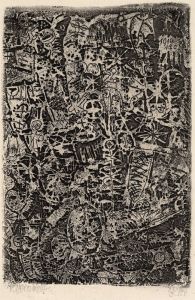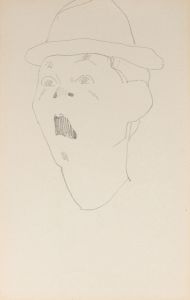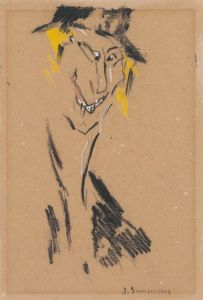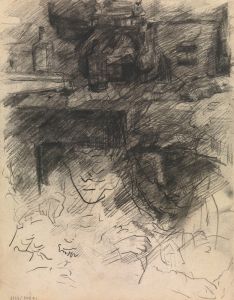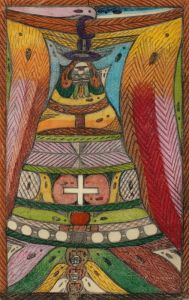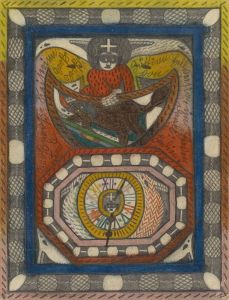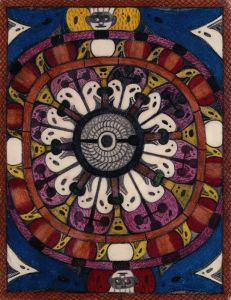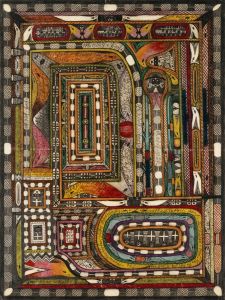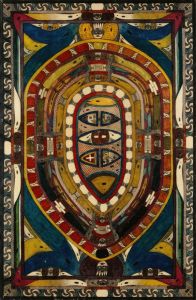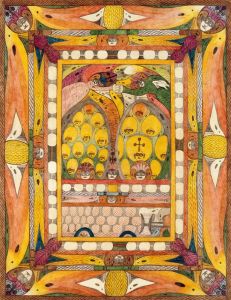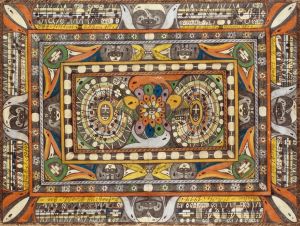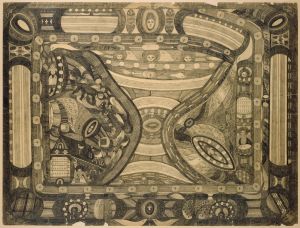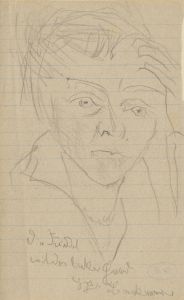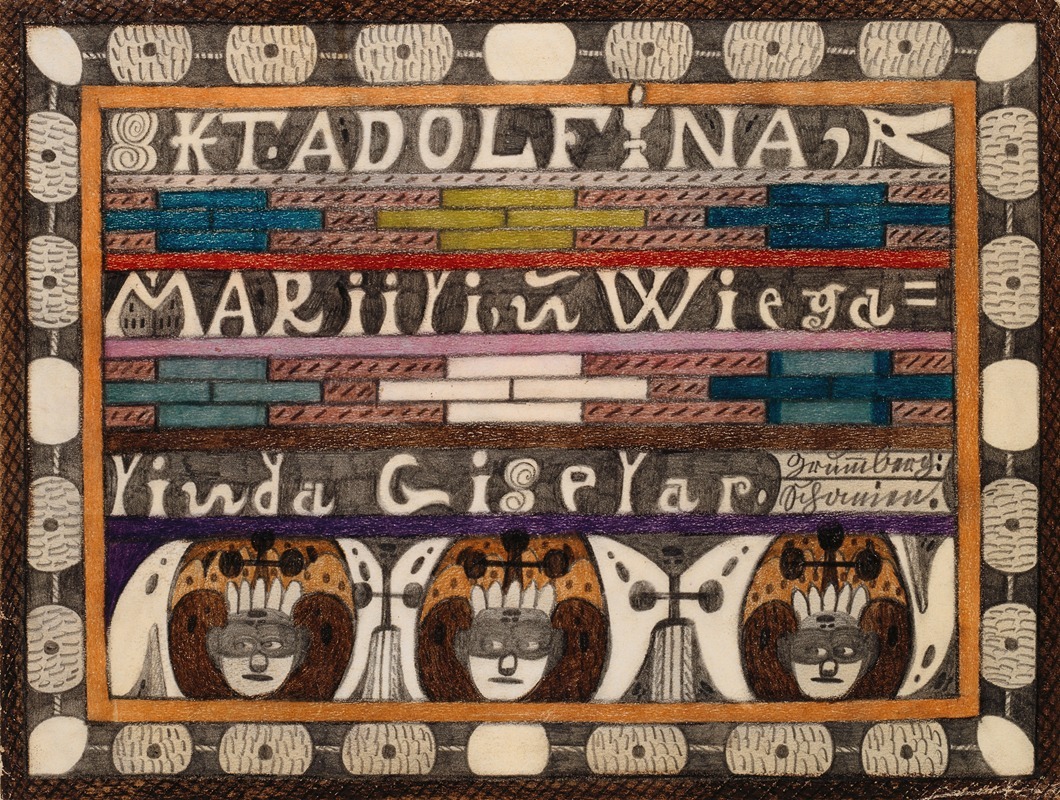
Skt. Adolfina, Mariili, und Wiegalinda Giselar
A hand-painted replica of Adolf Wölfli’s masterpiece Skt. Adolfina, Mariili, und Wiegalinda Giselar, meticulously crafted by professional artists to capture the true essence of the original. Each piece is created with museum-quality canvas and rare mineral pigments, carefully painted by experienced artists with delicate brushstrokes and rich, layered colors to perfectly recreate the texture of the original artwork. Unlike machine-printed reproductions, this hand-painted version brings the painting to life, infused with the artist’s emotions and skill in every stroke. Whether for personal collection or home decoration, it instantly elevates the artistic atmosphere of any space.
Adolf Wölfli (1864–1930) was a Swiss artist known for his intricate and complex works, often created during his long-term residency at the Waldau Clinic, a psychiatric hospital in Bern, Switzerland. Wölfli's art is a quintessential example of what later became known as "Outsider Art" or "Art Brut," a term coined by French artist Jean Dubuffet to describe art created outside the boundaries of official culture, particularly by individuals in psychiatric institutions.
"Skt. Adolfina, Mariili, und Wiegalinda Giselar" is one of Wölfli's many works that reflect his unique artistic vision and complex inner world. Wölfli's art is characterized by its dense, detailed compositions filled with geometric patterns, musical notations, and fantastical imagery. His pieces often incorporate text, numbers, and symbols, creating a tapestry of visual and narrative elements that are both captivating and enigmatic.
Wölfli's artistic journey began in earnest after he was institutionalized in 1895. Diagnosed with schizophrenia, he found solace and expression through drawing and writing. Over the years, he produced an extensive body of work, including drawings, collages, and a semi-autobiographical epic that spanned thousands of pages. His art was not merely a pastime but a vital means of communication and self-expression.
"Skt. Adolfina, Mariili, und Wiegalinda Giselar" exemplifies Wölfli's distinctive style, where he often depicted imaginary saints, landscapes, and elaborate narratives. The title itself suggests a blend of personal mythology and invented characters, a common theme in Wölfli's oeuvre. His works frequently feature a cast of recurring figures and motifs, each contributing to the overarching narrative he constructed throughout his life.
Wölfli's art gained recognition posthumously, largely due to the efforts of Dr. Walter Morgenthaler, a psychiatrist at Waldau Clinic, who published a monograph on Wölfli in 1921 titled "Ein Geisteskranker als Künstler" ("A Psychiatric Patient as Artist"). This publication was instrumental in bringing Wölfli's work to the attention of the art world and highlighting the creative potential of individuals with mental illness.
Today, Wölfli's works are celebrated for their originality and depth. They are housed in several major collections, including the Adolf Wölfli Foundation at the Museum of Fine Arts in Bern, which holds a significant portion of his oeuvre. His art continues to inspire and intrigue, offering insight into the mind of a man who, despite his challenges, created a rich and imaginative universe through his art.
While specific details about "Skt. Adolfina, Mariili, und Wiegalinda Giselar" may be limited, it remains a testament to Wölfli's extraordinary ability to transform his inner experiences into compelling visual narratives. His legacy endures as a powerful example of the intersection between mental health and artistic expression, challenging traditional notions of creativity and the boundaries of art.





